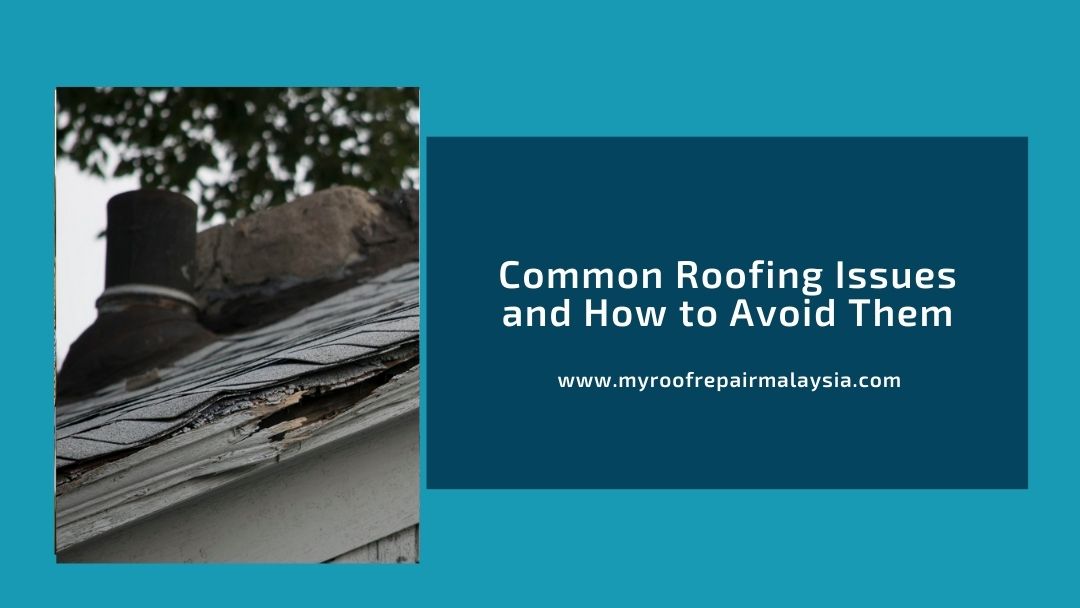Roofing is a huge investment, and it’s also one of the most important parts of your home. It protects your family from rain, snow, wind, and hail; not to mention provides shelter for all those expensive possessions you have inside. Fortunately, there are many ways you can keep your roof watertight and protect it from damage. The average life span for a typical asphalt shingle roof is about 20 years before it needs to be replaced. However, if yours starts leaking or develops other problems sooner than expected, you need an experienced professional roofer who knows their way around roofs to give you advice on what might be wrong with your property’s roof and how to fix it.
As a homeowner, you may have to deal with your roof at some point in time. No matter if it is for an emergency or just routine maintenance, knowing what kind of problems can arise and how to avoid them will make sure that everything goes smoothly. Here are four common issues that come up with roofs and what you can do about them:
1. Roof Leaks
Roofs are exposed to natural elements since they are the first line of defense against wind, rain, and other weather conditions. As a result, it is common to encounter leaking problems as time passes by. The moment you come across a leak, it’s crucial that you take action right away since an ignored leak can lead to even more serious issues such as mold growth or structural home damage. Regardless of what kind of roof you may have, once it develops leaks it’s going to be a huge problem.
Your roof acts as a shield and its purpose is to protect and keep everything dry inside your premises. When a leak suddenly develops, it’s not going to go away on its own and will become much more severe if left untreated.
One way to avoid leaks is to ensure your roof is free from debris all the time. Debris such as branches, twigs, and even twigs can damage your roof especially when you don’t regularly clean it. It can inflict scratches or punctures that will leak water once the rain starts. Leaks can only be fixed with the help of a professional roof contractor with strong sealants on hand.
2. Moisture Present in Roof
Just because you’re not experiencing some leaking problems doesn’t imply that you’re already safe. Even without leaks, your roof can actually develop molds and mildew due to moisture. When it rains some areas of your roof which are uneven may collect raindrops which might not dry up as quickly as it should.
As a result, these areas become a thriving spot for several fungi and bacteria. If mold and mildew are not treated, they will start rotting your roof and your home’s structure. Mold will slowly climb down to your walls and develop a deeper layer that’s hard to remove leading to even more serious damage and costly repairs.
To avoid such a situation from happening, regularly check your roof to see if excess water is present, and be sure to clean out your gutters which tend to store water after rainfall.
3. Damaged Roof Shingles
Surprising as it may seem, strong pressured winds and severe rainfall can inflict significant damage to your roof’s shingles, If this occurs, it has the potential to expose your roof’s underlying wood paneling and other materials that compromise the integral structure of your roofing system. As the water starts to gather under the shingles, your roof’s wood paneling will begin to rot and break apart. When this happens, it leaves some discolored areas on your roof.
Although you might not mind discoloration in your roof, the damage happening under your roof will worsen which will lead homeowners to costly repairs. If this scenario isn’t part of your plan, always inspect your roof after harsh weather conditions and conduct repairs to your shingles if needed.
4. Poor Roof Installation
Poor workmanship and roofing installation are among the reasons for quick roof damage. When this happens, it’s considered to be one of the major hassle for homeowners since their roof is more susceptible to repairs. Homeowners who are involved in unstable DIY roofing projects are also at the risk of performing sloppy work which can also be the reason for premature damage.
To avoid low-quality installation and workmanship, look for a reliable roofing contractor that has years of experience in the field. Always schedule an inspection to properly assess and address if any damage is present on your roof.
Final Words
Roofing issues are a headache to deal with but knowing what the common problems are, you’re sure to take countermeasures to avoid them from happening in the first place. If you want to get the best out of your roof, be sure to keep all the given information above; It’ll surely help you in the long run!

